|
As the young city of Troy grew in the early 1800s, River Street soon emerged as Troy’s most important thoroughfare. It made sense – the Hudson River was the source of the city’s growing importance as a nexus point for commerce traveling between New York City and Canada, and across to New England and central and western New York. By 1820, River Street in downtown Troy was lined with businesses, most of them mercantile. Goods landing in Troy by barge and watercraft could very easily be directly loaded or unloaded on the river, right behind a merchant’s place of business. Local records show that these businesses included wholesale grocers, hardware dealers, printers, drug companies and chandlers – merchants who outfitted ships with rope, sails, foodstuffs, hardware and other supplies. In 1820, a disastrous fire raged through Troy, destroying most of downtown, which of course, had many more wood-framed buildings than it does today. A plaque at 225 River Street marks where the fire stopped, but not before doing an incredible amount of damage. A map of the “Burnt District” shows where the fire consumed everything in its path. All the buildings now on downtown River Street were built after this fire. 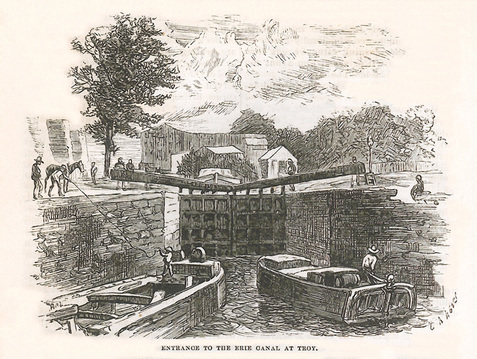 Illustration from Harper's Magazine, 1873. Illustration from Harper's Magazine, 1873. As soon as the embers cooled, Trojans began rebuilding, this time with brick. There was too much at stake, and fortunes lost had to be recovered. Plus, they all knew things would be changing for the better very soon. In 1825, the Erie Canal was completed. Through a series of waterways and locks, barges could cross the state from Lake Ontario, traverse the Mohawk, bypassing Cohoes Falls, to the Hudson at Waterford and Lansingburgh, and make their way down to New York City. This was huge, opening the grain fields and livestock markets of the Midwest to the ports in Brooklyn, enriching every city along the route. Troy was in the perfect spot to take great advantage of the canal and the riches associated with it. By the mid-1820s, River Street was the center of Troy’s commerce, and was referred to in the papers as the “Mart of Business.” Troy’s banking establishments and insurance companies built their offices right around the corner on First Street, making it quite convenient for the River Street merchants to conduct their financial affairs within shouting distance of their own buildings. In 1829, the city of Troy paved River Street for the first time, laying down a cobblestone roadway that would see a lot of traffic. MODERN RIVER STREET Before the Taylor Apartments were constructed, and the street was rerouted with the Congress Street Bridge ramp, commercial activity continued along lower River Street to Adams Street. This included factories and warehouses. This manufacturing activity continued north of Third Street, all the way through North Central to the Lansingburgh border. But the blocks between Congress and Third Street were the heart of the city’s commercial life. Many of Troy’s most successful businesses may have had their factories elsewhere in the city, but they sold their goods on River Street, making it a one-stop thoroughfare that helped make Troy one of the most prosperous cities in the United States. Some of the earliest businesses were located between Congress and First. Today’s boutiques, coffee shops and restaurants help make downtown a destination, but 19th century River was nothing like what we see today. Mid-19th century River Street would have been busy with men, horses and wagons loading and unloading goods. Messenger boys and deliverymen would have been scurrying up and down the street delivering orders and papers, while printing presses churned out newspapers, flyers and periodicals. Retail shopping along River didn’t really start until after the Civil War, so up until then, this was a street of serious big wholesale business. RIVER STREET BUILDINGS AND BUSINESSES Many of the buildings on River between Congress and First were built in the 1830s. They, and the buildings constructed later were all altered as time went by. None of them look today as they did when built. Most have had their facades updated in the late 1800s, when ornamentation gave Troy’s streetscapes such wonderful variety. During this time, ground-floor storefronts were added, most of which have been altered quite often in the last 160 years. Many of River Street’s buildings have had additions and extra stories added, and in a few cases, top stories have been removed, mostly because of fires. Most of the buildings on the Hudson River side of the street had additional warehouses in the back that opened onto the river’s edge. Remember that the river line has changed over the centuries. These buildings would have had easy access to piers, and many would have been able to hoist goods directly to and from barges or boats from their back doors. Today, only a handful of River Street’s buildings still have their riverfront warehouses, and those are not being used. Whether now apartments or unused space, the upper stories of River Street’s, warehouse buildings are distinctive. Many still have their block and tackle apparatus hanging from their roofs. Many also have center loading doors on all upper floors, which made getting goods upstairs much easier in the days before freight elevators. By 1843, steamboats began travelling the Hudson. Troy was a major port for travel to and from New York City. There were several piers along the city’s waterfront that catered to this passenger travel, with nearby hotels, restaurants, concert halls and other amenities. One such pier was at State Street, with another at River and Broadway.
197 River Street, now home to River Street Beat Shop on the ground floor, was once home to two separate institutions. One played a role in Troy’s labor history, and later, its recreational and entertainment history. The State Street pier was right behind it, but that hint must serve until the next post. In the meantime, while you are wandering around River Street tomorrow at the Victorian Stroll, take a close look at the buildings. There’s more to come in my next post. NEXT TIME: More on River Street’s “Mart of Business.” We’ll look at some of the individual buildings between Congress and First - buildings which shaped Troy’s great history. You might be surprised.
7 Comments
William Koester
12/4/2016 10:34:50 am
Please keep me apprised of your blog. This is a great piece
Reply
Suzanne
12/8/2016 03:54:02 pm
Thanks, please become a friend on my professional FB page (Suzanne Spellen, free-lance writer) I always post my new posts there.
Reply
12/8/2016 03:05:45 pm
Nice to meet you last night at the sanctuary Suzanne. You have painted a great portrait of the city in this era. Wondering if you would ever consider doing research on 5th Avenue, between Federal and Congress .
Reply
Suzanne
12/8/2016 03:56:00 pm
Nice to meet you too, Liz. I love that block, will certainly do some writing on it in the future. Please check in often, and friend me on my professional FB page, Suzanne Spellen, free-lance writer. Thanks!
Reply
10/1/2018 11:33:29 am
Hi! Great view of History! I am trying to find out if River Street was in earlier times a water supply Canal or Penstock flume used for powering the early mills. The source of the water would have been (higher) up stream in the river above the natural falls of the Hudson River above the first dam today. Do you know of any informtion about this question?
Reply
Mark Hewes
12/17/2018 02:21:41 pm
Wonderful! A number of my families were from Troy. In particular John Warr who owned a grocery at 276 River Street.
Reply
Leave a Reply. |
AuthorMy name is Suzanne Spellen. I've been many things: a writer, historian, preservationist, musician, traveler, designer, sewer, teacher, and tour guide; a long time Brooklynite and now, a proud resident of Troy, NY. Archives
February 2019
Categories
|

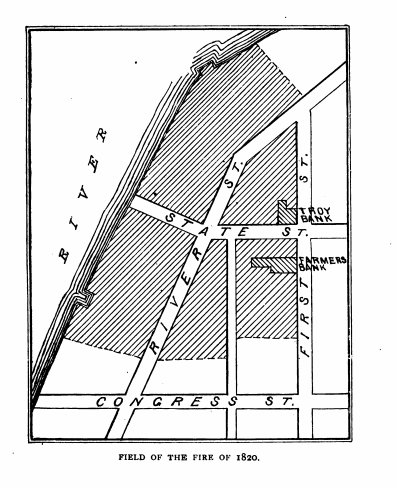

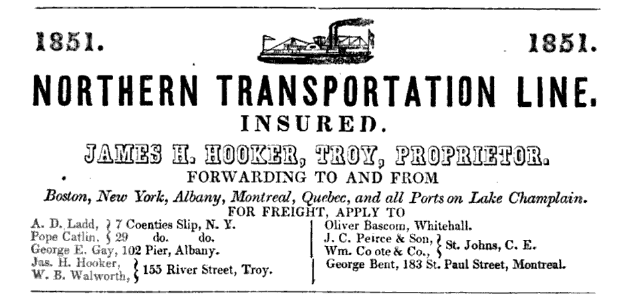
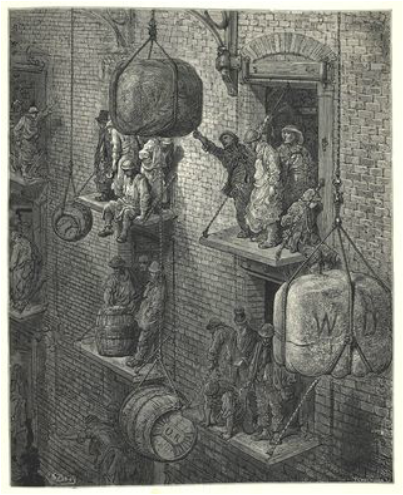
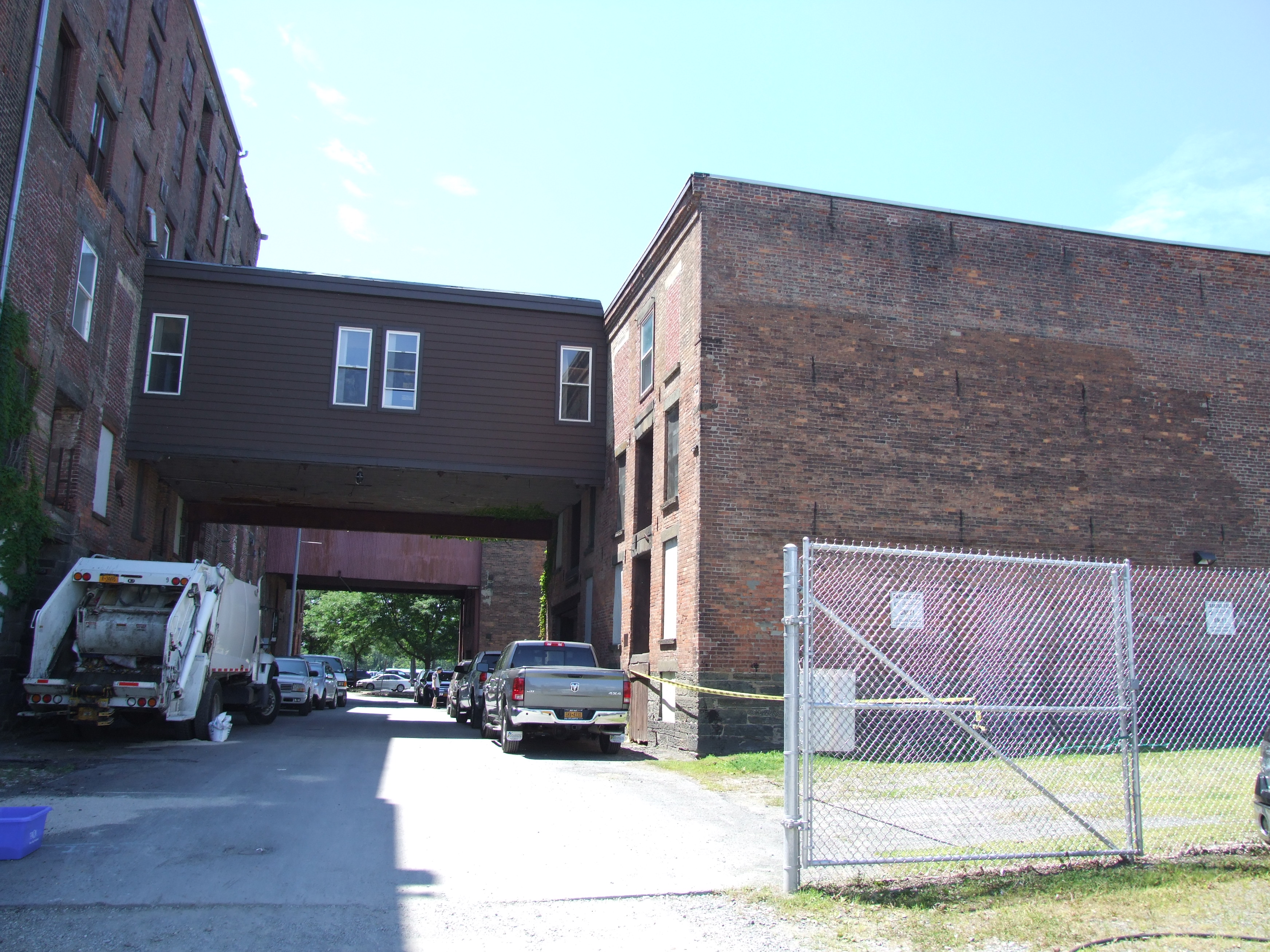
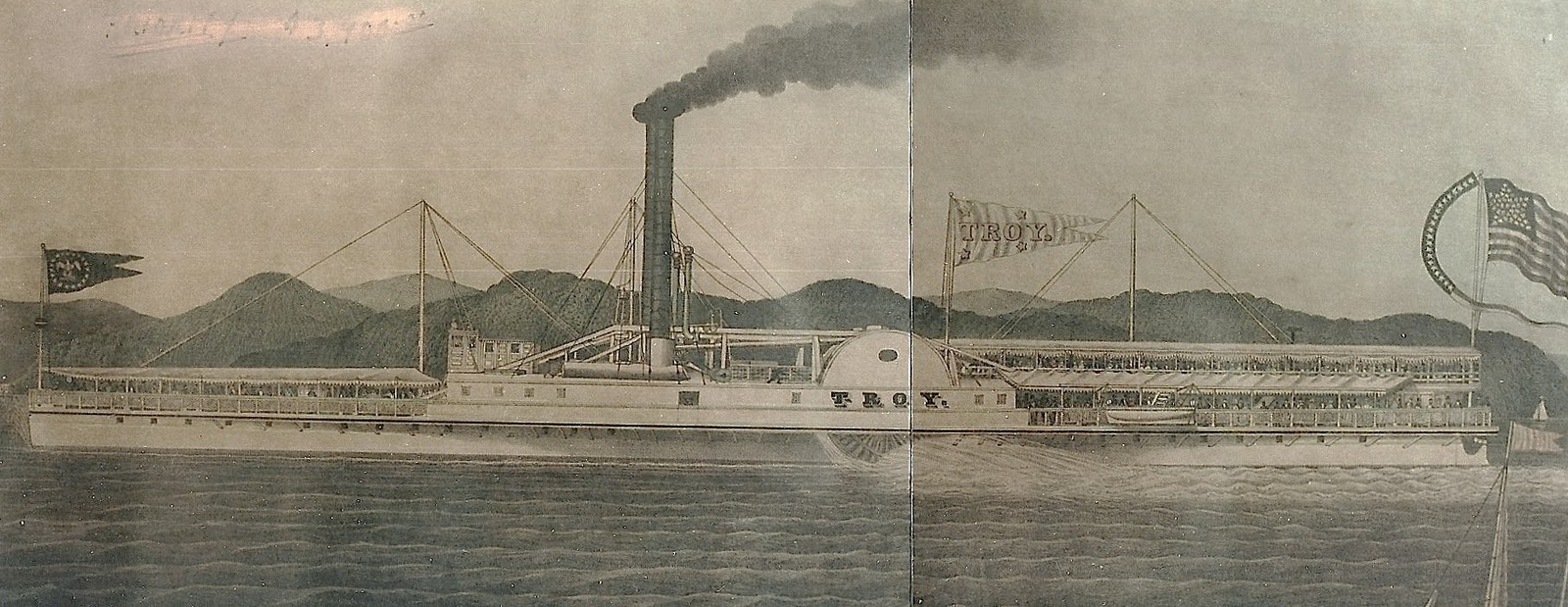


 RSS Feed
RSS Feed
